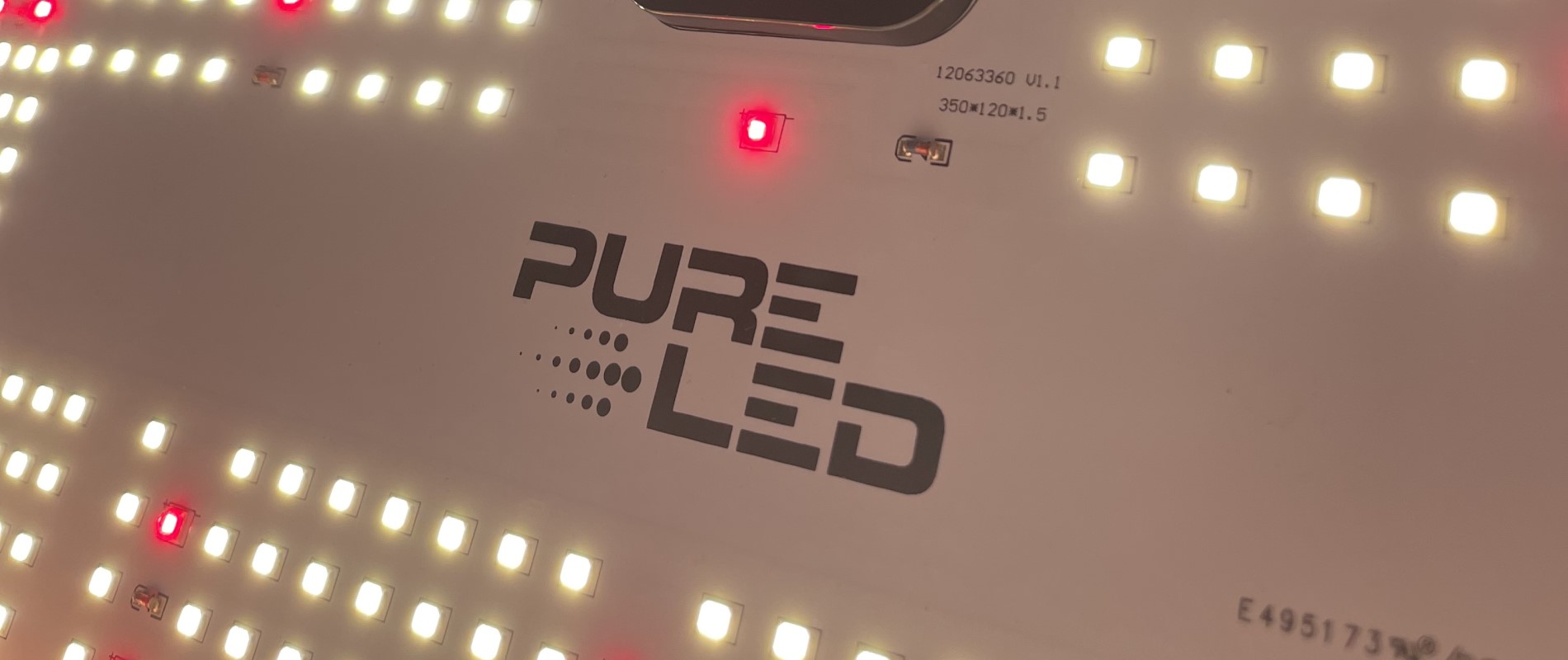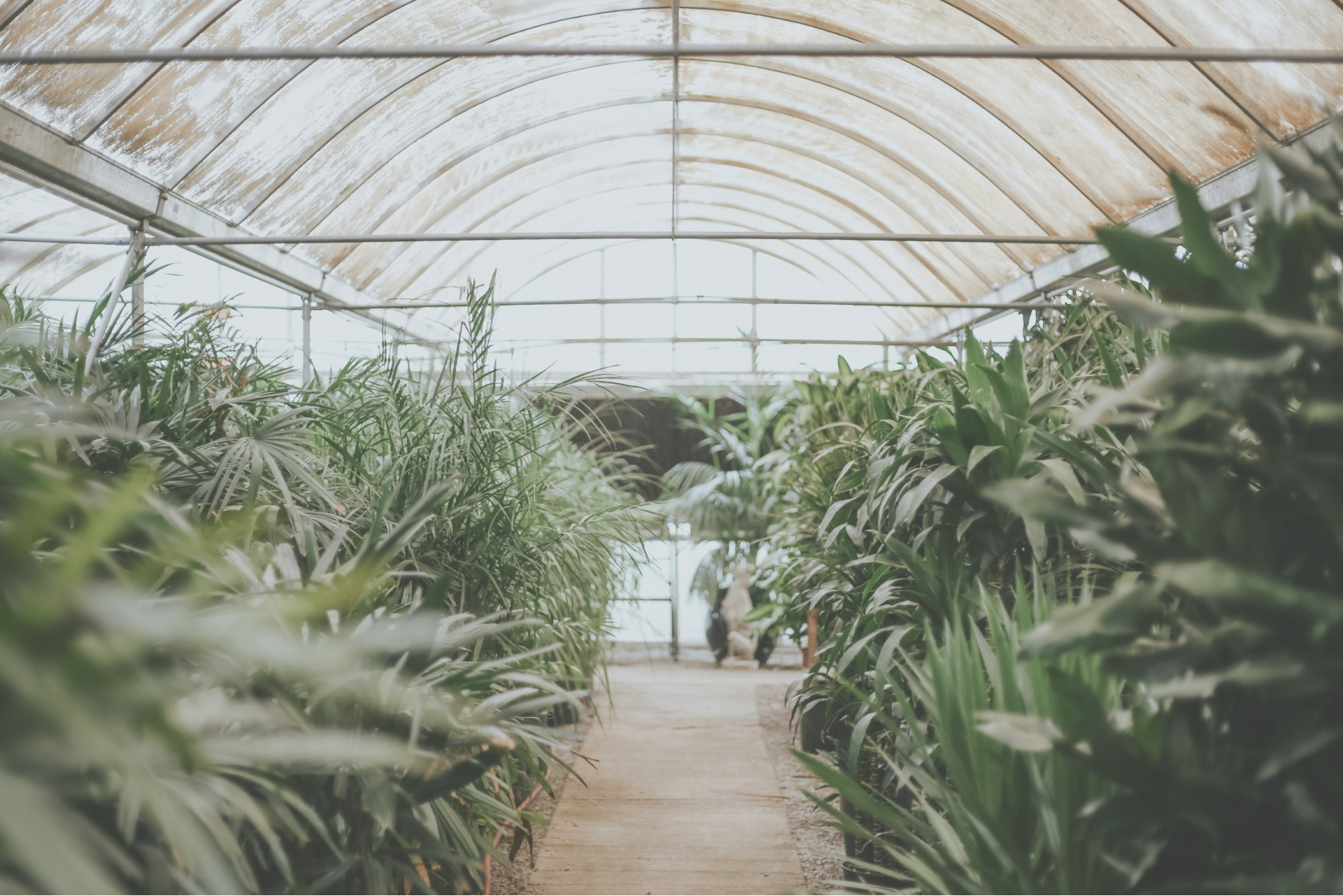How full-spectrum LED lights are revolutionizing cannabis cultivation

Designed to mimic the spectrum of sunlight, full spectrum LED grow lights provide plants with the essential wavelengths they need for optimal growth and development. From energizing blues to stimulating reds, these lights offer a balanced spectrum that promotes photosynthesis, chlorophyll production and overall plant health. Here we explain the basics of this technology.
A quiet revolution is taking place in the cannabis world that is altering the landscape of how this ancient plant is grown. And at the heart of this transformation is the adoption of light-emitting diode (LED) technology, which promises to redefine farming practices, improve sustainability and significantly increase crop quality.
When it comes to growing cannabis indoors, choosing the right LED grow lights is crucial for optimal performance. With a wide variety of models available on the market, it can be overwhelming to determine which one best suits specific needs. To help you make an informed decision, let’s explore a key factor to consider when evaluating different models of LED lights for cannabis Cultivation: the light spectrum.
What is the spectrum of a grow light?
The light spectrum refers to the electromagnetic wavelengths of light produced by a light source to promote plant growth. For photosynthesis, plants use light in the PAR(photosynthetically active radiation) region of wavelengths (400 nm-700 nm) measured in nanometers (nm).
Nanometers are a universal unit of measurement, but they are also used to measure the spectrum of light: humans can only detect wavelengths in the visible light spectrum (380-740 nm). Plants, on the other hand, detect wavelengths that include our visible light and beyond, to include the ultraviolet and infrared spectra. And both red and blue light are at the peaks of the PAR range:
- Red radiation (around 700 nm) is considered the most effective for boosting photosynthesis, especially in the flowering stage for biomass growth (important for cannabis growers). The main photosynthetic pigment present in plants, chlorophyll a, has its peak light absorption at 660 nm (red spectrum). Red light (together with infrared light) also activates the photoreceptors responsible for the regulation of flowering and photoperiod, the phytochromes.
- Blue light (around 400 nm) is essential for vegetative stages, mainly to establish structural growth. It also affects the movement of leaves, making them flatter to provide a more efficient surface area for light absorption; or the rapid expansion of these leaves, resulting in larger surfaces for photosynthetic activity. Another very important attribute of blue is related to the regulation of stomatal activity. Stomata are small openings on the leaf surface that allow CO2 to enter the leaf. Blue light induces stomata opening and allows higher CO2 fluxes inside the leaf. Higher CO2 concentrations produce higher rates of carbon fixation and biomass production.
What are full spectrum lights?
Cannabis plants evolved to flourish under the full spectrum of natural sunlight. As mentioned above, this spectrum contains a wide range of wavelengths, each of which has a specific color and energy level. Plants use different wavelengths for essential processes such as photosynthesis, growth and flowering.
While indoor growers can achieve excellent results with traditional Lighting, full spectrum LED grow lights take things to the next level. These lights, equipped with advanced LED chips, faithfully replicate the ideal light source found in the visible spectrum. They emit a mix of wavelengths, including blues for strong vegetative growth, reds for abundant flowering and other colors in between that contribute to overall plant health.
Another advantage of LED grow lights is that they can be set to produce certain wavelengths during specific periods during the day or night. This makes them ideal because growers can isolate specific spectrum colors according to crops and growing conditions.
But there are also broad spectrum LED grow lights that are similar to full spectrum in that they provide a variety of wavelengths that are beneficial for plant growth and development, but tend to have a more even distribution of wavelengths across the visible spectrum, without emphasizing specific peaks in the blue or red regions, geared toward growers who don’t need to focus too much on specific growth stages or plant characteristics.
And there are also directed spectrum LED grow lights, which are tuned to emit light in the blue and red ranges, with little or no green or yellow light, although they can also include additional wavelengths, such as ultraviolet or infrared light.

What is the ideal growing light spectrum for cannabis?
The ideal light spectrum for cannabis plants depends on several factors. These include how specific plants use light from the PAR spectrum for photosynthesis, but also wavelengths outside the 400-700 nm range. This light can help accelerate flowering, increase nutrition, accelerate growth rate, etc.
For example, sunlight produces many greens, yellows and oranges: these are the most available light spectra. In fact, studies tell us how green light, although not absorbed by chlorophyll as well as red and blue (hence why most plants appear green), is absolutely critical for photosynthesis and has a great ability to penetrate a plant’s canopy.
Apart from visible colors, cannabis responds particularly well to wavelengths outside the PAR range. Therefore, an additional benefit of using full-spectrum LEDs is the ability to use specific doses of ultraviolet wavelengths (100-400 nm) and infrared wavelengths (700-850 nm) outside the PAR range.
For example, an increase in infrared (750 nm-780 nm) can help stimulate growth and flowering of cannabis stems, something growers desire; while ultraviolet light in minimal amounts can prevent uneven stem elongation and leaf shrinkage. In addition, short wavelength irradiation, such as UVA rays, activates the plant’s response system, which begins to protect itself from abiotic stress caused by extreme environmental conditions: in other words, it makes it create its own sunscreen in the form of more trichomes.
The effectiveness of full spectrum LED lights in marijuana cultivation
Full spectrum LED grow lights have revolutionized cannabis cultivation due to their ability to provide the optimal light spectrum for plants at all stages of growth. And here is some data that illustrates its effectiveness:
- Higher yields: several studies have shown that they can significantly increase cannabis yields compared to traditional light sources. For example, this study found that the use of full-spectrum LED grow lights resulted in a 20-30% increase in cannabis yield compared to high-pressure sodium (HPS) lights.
- Cannabinoid profile: full-spectrum LED grow lights can influence the production of cannabinoids, which are the chemical compounds responsible for the effects of cannabis. This 2018 research showed that cannabis plants grown with full-spectrum LED lights had higher levels of THC and CBD, compared to plants grown with limited-spectrum lights.
- Terpene production: full-spectrum LED grow lights have been shown to increase terpene production in cannabis plants. A 2019 study investigated the effect of different lighting spectrums on terpene profiles in cannabis and found that full-spectrum LED lighting promoted higher levels of terpene production compared to limited-spectrum lights, resulting in more flavorful and aromatic flowers.
- Energy efficiency: LED technology allows precise control over the light spectrum and reduces energy consumption by emitting light at specific wavelengths that plants can absorb efficiently. This translates into energy savings and reduced operating costs for cannabis cultivation.
- Customizable light spectra: by adjusting the proportions of different wavelengths, growers can optimize plant growth, flowering and resin production. This level of customization allows adjusting the lighting conditions to maximize the desired traits of different cannabis genetics, as is the case with the Pure Led EXPERT range of luminaires, which offers the possibility of individually designing a light curve for each phase of cultivation and includes an extra channel to add UV radiation.
How to Choose the Right Full Spectrum LED Grow Light
But choosing the ideal full spectrum grow lights for your grow requires more than just choosing colors and types. You should also think about other functions that can benefit you. This list should help you understand the benefits of grow lights you might consider that are present in The Pure Factory’s description of LED systems:
- Intensity attenuation. For different crops, you may wish to have the freedom to place lights of different spectrums on your plants. You may especially see the need to change the intensity of the light waves during the different growth phases, from germination to full bloom. For example, the Pure Led PRO – 200W luminaire is full spectrum and dimmable in intensity through a button in 5 steps (0-25-50-75-100%).
- Power. Grow lights, such as bar lights or luminaires, come in various wattage capacities. This allows you to control how much power it consumes while providing your plants with sufficient brightness.
- Length, width and height. It is important to choose the dimensions, shape and style of the luminaire according to what fits your growing environment. For example, you can use some lights vertically if you have limited horizontal space, but have high ceilings. Different shapes and styles, along with specific dimensions, will fit better in certain growing spaces than others.
- Ease of assembly. Some grow lights are permanently attached with mounting hardware. Others only remain in place temporarily. It depends on your needs, and what you think is best for your plants, to determine which type of mounting system you could benefit from the most.
- Coverage. Your grow lights should cover your plants sufficiently. For example, you need light for the main plant, but you also need enough light to reach the perimeter, including any seedlings that may be around that main plant. In The Pure Factory’s Led Systems catalog we always specify the recommended coverage area for a given luminaire.
And finally, remember that to achieve optimal results with your indoor plants, it is necessary to take the time to research and understand the different grow light options available; and choose the one that best suits your specific requirements. A well-informed decision will contribute significantly to the success of your indoor cannabis growing projects.

No comments